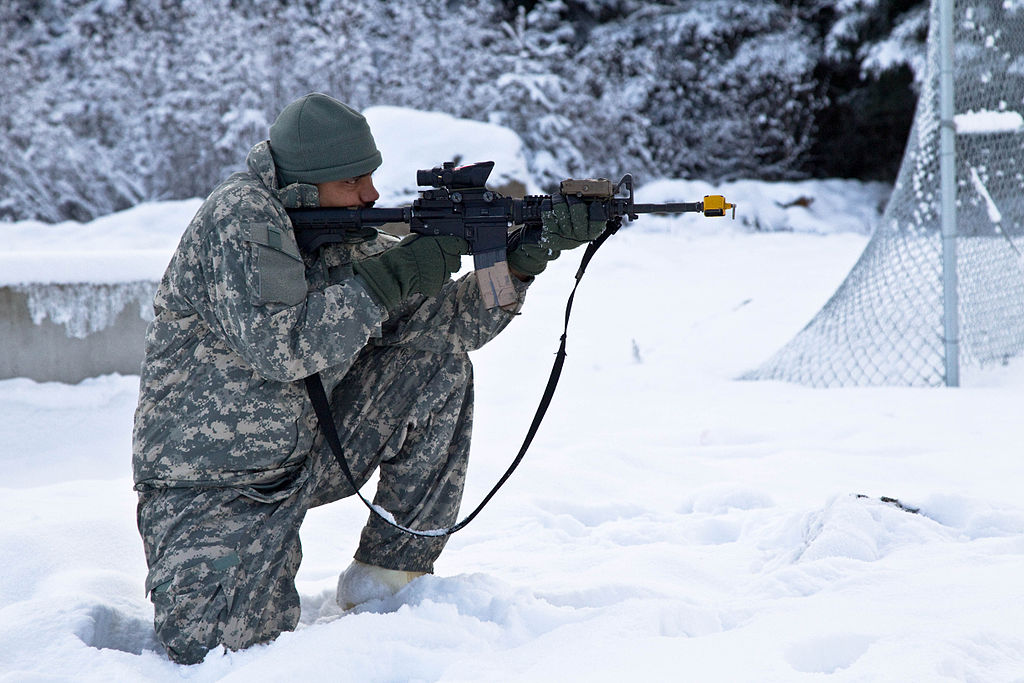For Indian soldiers serving on Siachen Glacier, the world’s highest battleground, extreme weather turns out to be more dangerous and fatal than enemy bullets. To fight this situation and provide life-saving equipment to our soldiers, the Indian Space Research Organizations (ISRO) is working on developing space technology in a way that it can be used by the armed forces too. Several developments by ISRO’s space research centre, the Vikram Sarabhai Space Centre (VSSC), can help save lives at such great heights where living conditions are difficult. According to K Sivan, a rocket scientist and Director of VSSC, the technologies developed for space application can easily be tweaked for other societal uses. Here are some of the ongoing developments:
1. Silica Aaerogel

Source: Wikimedia
Silica aerogel is an ultra-light weight material that acts as an insulator. The aerogel is a solid material with a complex matrix that encloses 99 percent air, thus acting as a thermal insulator. According to Naga Priya, a scientist at VSSC who is part of the team that made this material, the lab is having discussions with Indian Ordnance Factory that makes clothes for the soldiers to figure out if silica aerogel can be added between layers of cloth. According to reports, it is the lightest artificial material in the world, and is not completely ready for use as of now.
2. Handheld search and rescue radio signal emitter
Source: Twitter
Satellites can detect these small and portable signal emitters, which can help locate missing soldiers in remote locations. Soldiers and trekkers can activate these handheld devices using a button. Once activated, it starts emitting a radio beacon that satellites can detect and the exact position of the person can be found using GPS.
VSSC has also developed another similar, but slightly larger device for use by fishermen. The device is triggered when it comes in contact with salt water, or can be triggered manually as well. It transmits a pulsed signal for at least 65 hours at a stretch. ISRO has used this device to save many trekkers and can help the Indian Armed Forces to locate remote locations too.
3. Portable fuel cell system
Source: Twitter
Scientists at VSSC have developed this system to produce electricity directly from fuel with the help of an electrochemical process that requires only hydrogen gas and air as inputs. It can generate up to about 100 watts of power. The device can help in locations where uninterrupted maintenance-free power supply is difficult to obtain. Currently, it is being tested in Dehradun.
4. Automatic camera for surveillance
Source: Flickr
ISRO is also planning to use G-SAT-6 satellite’s multimedia communication capability for setting up surveillance systems in remote locations to keep an eye on infiltrators. Fuel cells can supply power to the automatic, remotely-operated cameras, which will send pictures to Indian satellites and from there to the soldiers.
Like this story? Or have something to share? Write to us: contact@thebetterindia.com, or connect with us on Facebook and Twitter (@thebetterindia).
If you found our stories insightful, informative, or even just enjoyable, we invite you to consider making a voluntary payment to support the work we do at The Better India. Your contribution helps us continue producing quality content that educates, inspires, and drives positive change.
Choose one of the payment options below for your contribution-
By paying for the stories you value, you directly contribute to sustaining our efforts focused on making a difference in the world. Together, let's ensure that impactful stories continue to be told and shared, enriching lives and communities alike.
Thank you for your support. Here are some frequently asked questions you might find helpful to know why you are contributing?

